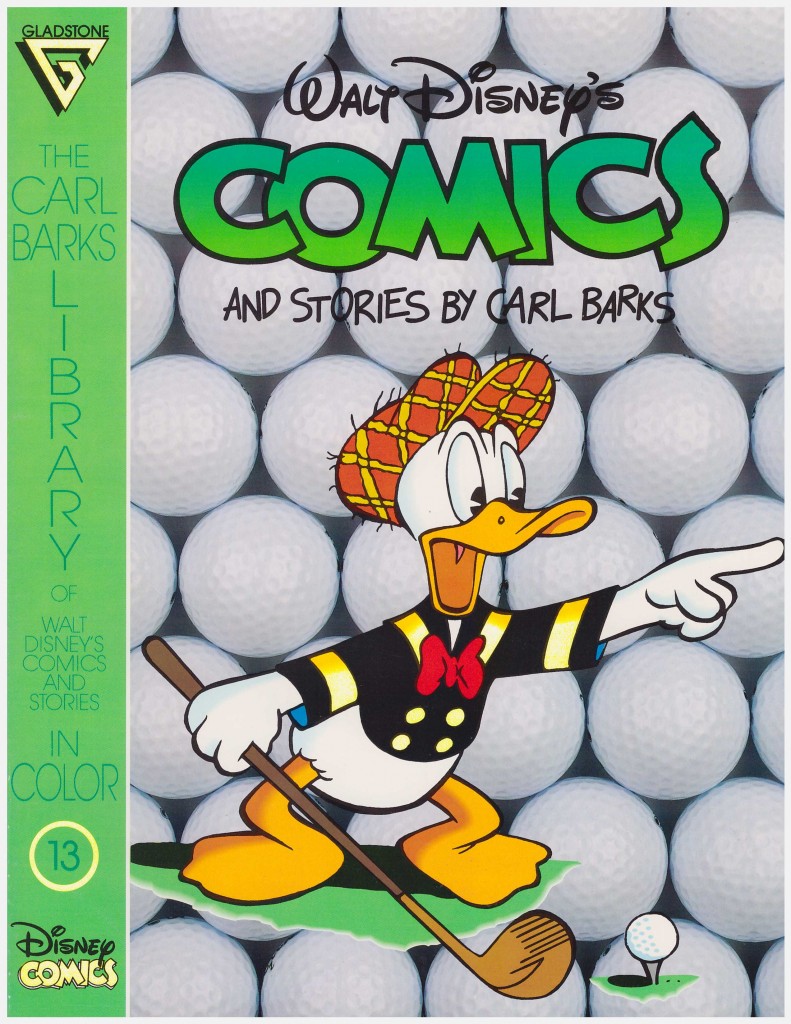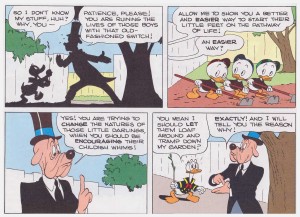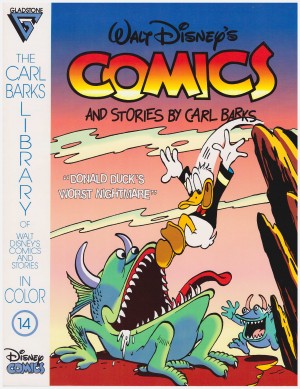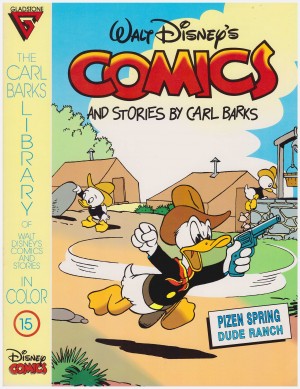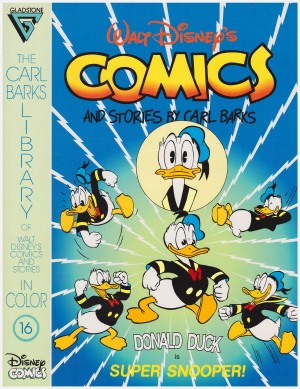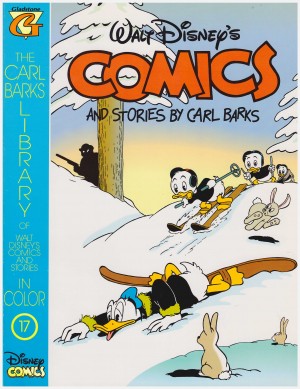Review by Frank Plowright
Those who’ve studied the work of Carl Barks have reached a broad consensus that it’s around 1948 that his work settles into the quality groove that would be sustained for over a decade, and the tales reprinted here date from summer 1948.
Accepting Donald Duck as the focus of the strip, he needs other characters to play off. Huey, Dewey and Louie make very good foils, but even as resourceful as they are, there’s a limitation to what children do. Up to this point Barks’ use of Daisy has been sparing, and usually only as a secondary character, her purpose to be the source of frustration as her dates with Donald disintegrate due to Huey, Dewey and Louie’s antics. Gladstone Gander offers other possibilities as a rival, requiring alternative solutions.
Even in the days before Barks hit on the idea of Gladstone’s unnatural good fortune, he portrayed him as an insufferable character. He appears in two tales here, once determined to raise the five dollars Daisy requires to hit her fundraising target before Donald can manage it, then as a golfing rival with $10 at stake. That was a significant amount of money in 1948.
The golf story is exquisitely plotted. Huey, Dewey and Louie are unwillingly roped into being Donald’s caddies, and because he’s such a poor golfer this will wipe their entire afternoon. Their solution is to help matters along by ensuring Donald hits a hole in one every time. He’s suspicious, but they’re smart enough to work round that, and eventually Donald is convinced in his miraculous talent. It’s at that point that Gladstone arrives and Barks builds up to a spectacular finale.
The opening story has Donald berated for his constant threats to birch his nephews. A child-rearing expert convinces him he should indulge their natural creative instincts, and knowing this they exploit the scenario for all its worth. It’s a new manner of frustration, and Barks also plays it for all its worth. Donald also visits the moon here, four years before Tintin’s far more acclaimed journey. While in no way poor, it’s the weakest material here, another story of rivalry, and meeting odd moon creatures. Barks is particularly inventive around the creators of the rocket used, their garage lab containing a shaking sealed box labelled ‘Ultra-Violent Rays’, and others labelled ‘Atom Syrup’ and ‘Goose Grease’.
As ever, the cartooning is first rate, and there’s a rare instance of of Barks drawing characters without the distinctive black blob nose applied to humans in Disney strips. Two slinky women appear, and drawn from distance Barks fakes the noses. This is in a tale where Donald is appointed a coast patrol officer, a task to which he brings his usual ineptitude. Anyone looking vaguely human would be a rare occurrence in Barks’ work from this point.
